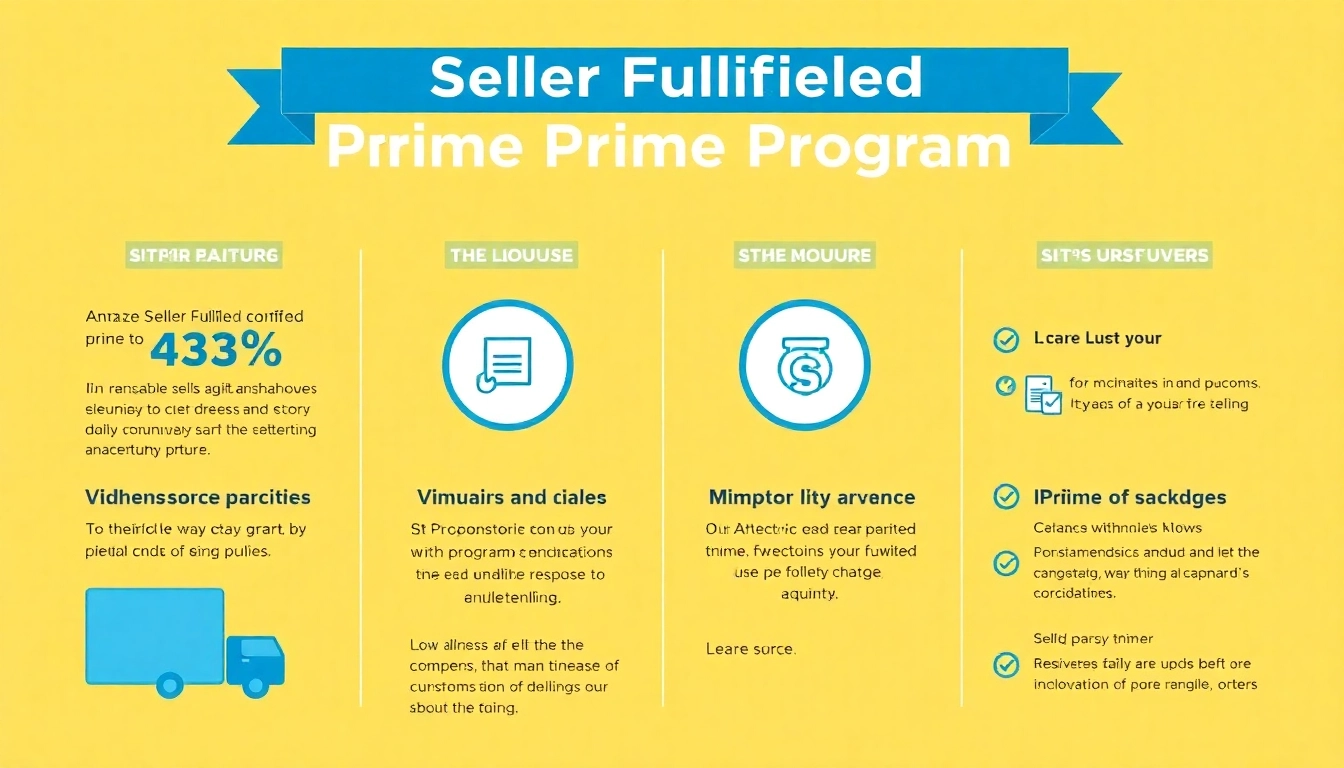
Understanding Amazon Seller Fulfilled Prime
In the world of e-commerce, Amazon seller fulfilled prime (SFP) has emerged as a significant option for sellers who wish to retain control over their fulfillment processes while still benefitting from Amazon’s Prime branding. This unique program allows third-party sellers to offer Prime benefits while managing their own shipping logistics. In this article, we will delve into the intricacies of Seller Fulfilled Prime, understand its components, and explore how it can enhance your business operations.
What is Seller Fulfilled Prime?
Seller Fulfilled Prime is an Amazon initiative designed for third-party sellers who want to qualify for the Prime badge without using Amazon’s Fulfillment by Amazon (FBA) services. Through this program, sellers ship their products directly to customers, ensuring they meet the stringent shipping and handling standards required for Prime status. This means Prime members can enjoy the same rapid delivery options—typically within one to two days—that they expect from Amazon, but fulfilled by the seller directly.
How It Differs from FBA
To comprehend SFP fully, it is essential to distinguish it from Fulfillment by Amazon (FBA). With FBA, sellers send their inventory to Amazon’s warehouses, where Amazon takes care of storage, packaging, and shipping of the products. Conversely, SFP allows sellers to manage their inventory, shipping, and customer service while still being part of the Prime program. The critical difference lies in the control and flexibility that SFP offers, enabling sellers to maintain their business’s operational needs and inventory management.
Eligibility and Enrollment Process
Joining the Seller Fulfilled Prime program requires meeting specific eligibility criteria. Sellers must have a solid history of self-fulfillment, including shipping a minimum number of packages over a set period, maintaining a low cancellation rate, and ensuring a high tracking rate for shipments. The enrollment process consists of an application to pre-qualify for a trial period, wherein sellers must demonstrate their ability to consistently meet Prime shipping standards. After passing this trial, sellers can officially enroll in the program.
Key Benefits of Seller Fulfilled Prime
Achieving Prime Status
The most significant advantage of Seller Fulfilled Prime is the ability to feature the Prime badge on qualifying products. This can substantially increase visibility and likelihood of sales, as Prime members are more inclined to purchase items that come with their subscription benefits. Being designated as Prime-eligible can enhance customer trust and boost conversion rates significantly.
Enhanced Customer Engagement
By using SFP, sellers can engage with customers more directly. This program allows for personalized customer service, where sellers are responsible for handling inquiries, complaints, and returns. Providing direct engagement enhances customer satisfaction, creating a loyal customer base over time. Moreover, faster shipping options can improve overall customer experience, which is crucial in an era where speed and reliability are paramount.
Competitive Shipping Options
Sellers have the flexibility of selecting their shipping carriers, allowing them to curate service levels that best meet their business needs. This can lead to cost savings and the potential for negotiated carrier rates. SFP also enables sellers to offer free shipping to Prime customers, providing a competitive edge against other sellers who may not be participating in the program.
Challenges of Implementing Seller Fulfilled Prime
Meeting Performance Metrics
While SFP offers numerous benefits, it also comes with challenges. Sellers must continuously meet Amazon’s stringent performance metrics, including on-time delivery rates, valid tracking rates, and cancellation rates. Failure to meet these standards can result in penalties or removal from the program, which can be detrimental to business operations. Regularly analyzing shipping performance and optimizing fulfillment processes is essential to maintain compliance.
Cost Implications
Operating under the SFP program may initially seem cost-effective, but hidden costs can accumulate. Sellers must invest in robust logistics solutions to ensure they can handle the rapid shipping demands required by Prime customers. Additionally, expenses related to increased staffing or technology for improved tracking and customer management can add up. It’s crucial to conduct a detailed cost-benefit analysis before committing to the program.
Managing Customer Expectations
With the Prime label comes high customer expectations. Customers expect prompt communication, quick resolutions to issues, and flawless delivery experiences. Sellers must have a solid plan in place to manage these expectations efficiently. Establishing comprehensive customer service protocols and utilizing feedback mechanisms can help in addressing consumer concerns proactively.
Best Practices for Success
Optimizing Fulfillment Processes
To succeed in the Seller Fulfilled Prime program, sellers must streamline their fulfillment processes. This includes optimizing inventory management, ensuring they maintain adequate stock levels, and implementing efficient picking and packing systems. Sellers should also regularly review shipping routes and timeliness to enhance efficiency.
Utilizing Technology for Tracking
Investing in technology to track shipments is critical for SFP participants. Advanced tracking systems can provide real-time updates to both sellers and customers, fostering transparency and trust. Integrating software that can analyze shipping performance will help sellers identify bottlenecks and areas for improvement.
Ensuring Quality Customer Service
Providing exceptional customer service is vital when engaging with various customers through SFP. Sellers should invest in training customer service teams to handle inquiries efficiently and effectively. Creating a structured feedback loop with customers will further enhance service quality and improve future shipping procedures.
Measuring Success in Seller Fulfilled Prime
Key Performance Indicators (KPIs)
To evaluate the efficacy of the Seller Fulfilled Prime program, sellers should focus on specific Key Performance Indicators (KPIs). These can include order defect rates, late shipment rates, customer satisfaction scores, and tracking accuracy. Regularly assessing these metrics will enable sellers to adjust strategies accordingly and maintain a competitive edge in the marketplace.
Improving Tracking and Responsiveness
Improving tracing and shipping responsiveness is paramount for SFP sellers. Leveraging automated notifications for customers regarding shipment statuses can enhance satisfaction. Furthermore, reviewing and refining shipping processes based on performance data allows for continual improvement.
Gathering Customer Feedback
Finally, actively gathering customer feedback post-delivery can provide invaluable insights. It helps sellers understand customer perceptions and areas needing improvement. Regular surveys or follow-ups can encourage reviews and enhance seller ratings, crucial for maintaining high conversion rates within the Amazon marketplace.






